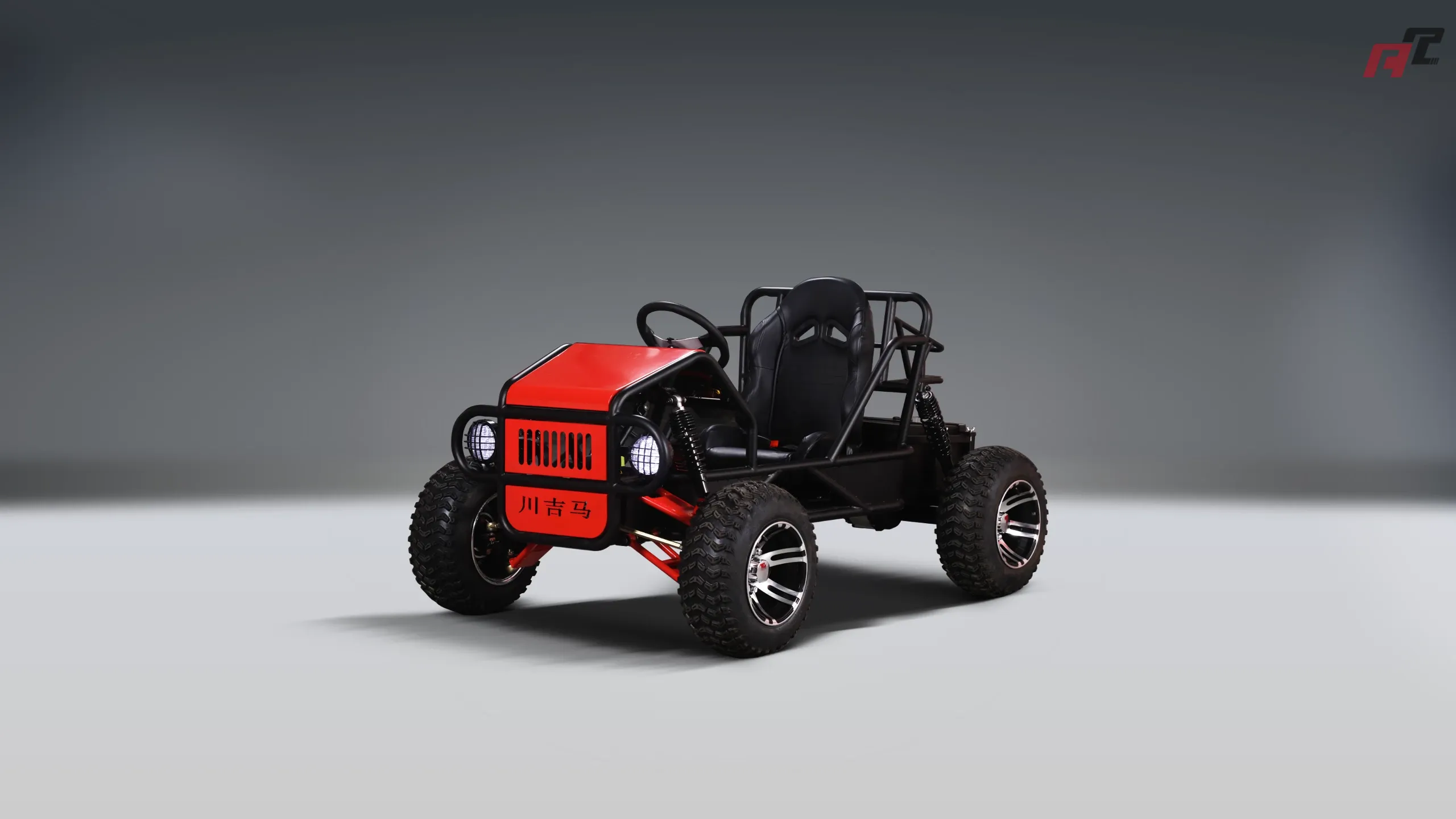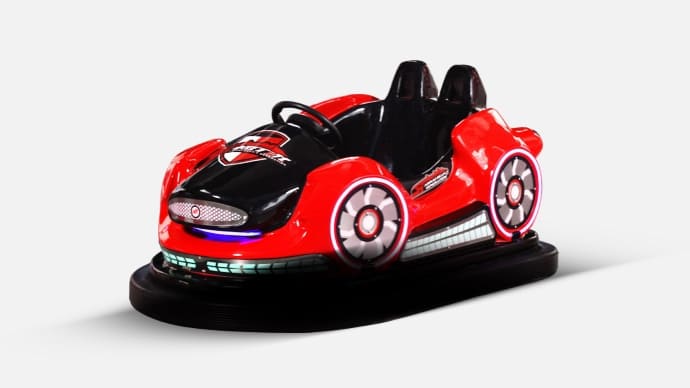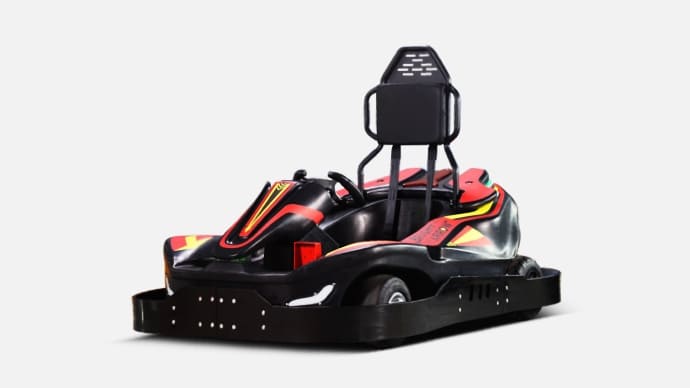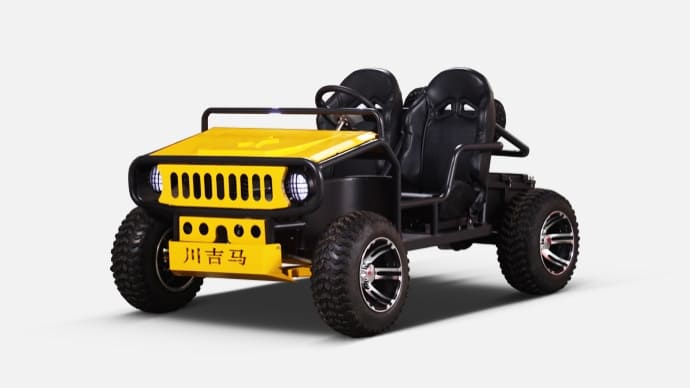How to Choose the Right Battery for Your Bumper Car Fleet
- How to Choose the Right Battery for Your Bumper Car Fleet
- Why battery choice matters for your bumper car business
- Key operational impacts
- Battery types used in bumper cars (battery bumper car): pros and cons
- How to size batteries for bumper cars: a practical method
- Example sizing for one bumper car
- Operational considerations beyond capacity
- Charging strategy and infrastructure
- Battery Management System (BMS)
- Temperature and venue environment
- Safety and certifications
- Total cost of ownership (TCO) and lifecycle planning
- Quick lifecycle comparison (illustrative)
- Recommended specifications for a modern bumper car battery
- Maintenance checklist for battery bumper car fleets
- Fleet management strategies
- Battery pooling and swapping
- Centralized vs distributed charging
- Why work with ANCHI Amusement on battery choices?
- Checklist: Choosing the right battery for your bumper car fleet
- Frequently Asked Questions (FAQ)
- Q: Which battery chemistry is best for bumper cars?
- Q: How long should a bumper car battery last on a single charge?
- Q: Can I fast-charge bumper car batteries between sessions?
- Q: What certifications should I ask for?
- Q: How do I manage batteries for a high‑throughput park?
- Q: Does ANCHI support custom battery integration and venue design?
How to Choose the Right Battery for Your Bumper Car Fleet
Choosing the correct battery bumper car power system is one of the most important decisions venue operators and manufacturers must make. The right battery affects ride time, safety, operating cost, maintenance, and guest experience. This guide helps operators and buyers evaluate battery technologies, size packs to meet operational needs, and implement best practices for charging, maintenance, and lifecycle management.
Why battery choice matters for your bumper car business
A well-chosen battery system improves uptime, reduces total cost of ownership (TCO), increases safety, and simplifies venue operations. For an amusement equipment manufacturer like ANCHI Amusement—offering bumper cars, go-karts, and complete venue solutions—matching the proper battery to vehicle design ensures reliable performance and a better guest experience.
Key operational impacts
- Runtime and throughput: Battery capacity dictates how long each car runs between charges and how many sessions you can schedule per day.
- Weight and handling: Battery weight affects vehicle balance and ride dynamics.
- Maintenance and downtime: Some chemistries require regular maintenance or replacement; others need minimal upkeep.
- Safety and compliance: Certifications, thermal behavior, and transport rules differ by chemistry.
- Economics: Upfront cost vs lifetime cost—higher initial investment in lithium often yields lower TCO.
Battery types used in bumper cars (battery bumper car): pros and cons
Common battery chemistries and formats in amusement vehicles include flooded lead-acid, sealed lead-acid (AGM/gel), LiFePO4 (lithium iron phosphate), and other lithium-ion variants (e.g., NMC). Below is a practical comparison with typical performance characteristics relevant to bumper car fleets.
| Feature | Lead‑Acid (Flooded/AGM) | LiFePO4 (Lithium Iron Phosphate) | Lithium NMC / High‑energy Li‑ion |
|---|---|---|---|
| Energy density (approx.) | 30–50 Wh/kg | 90–140 Wh/kg | 150–220 Wh/kg |
| Typical cycle life | 300–800 cycles (depends on type & maintenance) | 2000–5000 cycles | 1000–3000 cycles |
| Usable DoD (recommended) | 30–50% | 70–90% | 70–90% |
| Weight for 3 kWh pack (est.) | ~60–100 kg | ~20–35 kg | ~15–25 kg |
| Charging time (typical) | 4–10 hours (slow) | 1–4 hours (fast options) | 1–3 hours (fast options) |
| Maintenance | Higher (water, equalization, terminals) | Low (BMS recommended; minimal routine work) | Low (BMS required) |
| Upfront cost | Low | Medium–High | High |
| Safety | Stable, but can leak or off-gas (flooded) | Very stable chemistry; high thermal stability | High energy density; requires robust BMS/thermal controls |
Note: values are approximate ranges commonly used by industry suppliers in 2024. Always confirm exact specs with battery manufacturers and your vehicle integrator.
How to size batteries for bumper cars: a practical method
Correct sizing ensures each bumper car achieves your target session length and daily throughput. Use this simple energy calculation:
Required battery capacity (Ah) = (Average power draw (W) × Desired run time (h)) ÷ System voltage (V) ÷ Usable DoD
Example sizing for one bumper car
Assumptions (typical example):
- Average motor draw during operation: 500 W
- Desired continuous operating time per day: 6 hours (total across sessions)
- System voltage: 48 V
- Target usable DoD: 80% (LiFePO4) or 50% (lead‑acid)
| Parameter | Calculation | Result |
|---|---|---|
| Energy required (Wh) | 500 W × 6 h | 3000 Wh (3.0 kWh) |
| Ah required at 48 V (LiFePO4) | 3000 Wh ÷ 48 V ÷ 0.8 | ≈ 78 Ah |
| Ah required at 48 V (Lead‑acid) | 3000 Wh ÷ 48 V ÷ 0.5 | ≈ 125 Ah |
So for this example, a 48 V 80 Ah LiFePO4 pack (~3.8 kWh nominal) meets needs with good lifecycle and weight advantages. A lead‑acid option needs a larger Ah rating and will be heavier.
Operational considerations beyond capacity
Charging strategy and infrastructure
Decide between opportunity charging (top-up between sessions), full daily charging, or battery swapping. Lithium batteries support faster charging and more opportunity charging cycles without major lifecycle penalties. If you plan opportunity charging, ensure chargers are matched to the battery chemistry and include proper charge profiles and temperature compensation.
Battery Management System (BMS)
For lithium systems a robust BMS is essential. It balances cells, prevents overcharge/discharge, manages temperature limits, logs data, and protects against faults. Ensure the BMS supports cell-level monitoring and provides diagnostic output that your maintenance team can use.
Temperature and venue environment
Batteries perform differently in temperature extremes. LiFePO4 performs well in a wide temperature range but requires temperature protections for cold charging. Lead‑acid batteries lose capacity and life faster in high temperatures and need a controlled storage/charging environment.
Safety and certifications
Check for relevant certifications and compliance: UL 2271/2580 (battery systems), CE for European markets, UN38.3 for transportation of lithium cells, and national electrical safety standards. For amusement rides, also confirm that the complete vehicle system has been inspected and meets local safety authority requirements.
Total cost of ownership (TCO) and lifecycle planning
Upfront cost is only one part of the equation. Consider replacement frequency, energy efficiency, maintenance labor, charging infrastructure, and disposal/recycling costs. Lithium batteries typically have higher upfront cost but much longer cycle life and lower maintenance—often delivering better TCO over 3–5 years for busy venues.
Quick lifecycle comparison (illustrative)
| Metric | Lead‑Acid (example) | LiFePO4 |
|---|---|---|
| Initial pack cost (relative) | 1× | 2–3× |
| Expected useful cycles | ~400 | ~3000 |
| Maintenance labor | Higher | Lower |
| Replacement frequency (for busy venue) | Every 1–2 years | Every 5–8 years |
These figures are illustrative. Actual economics depend on usage pattern and local electricity & replacement costs.
Recommended specifications for a modern bumper car battery
- Chemistry: LiFePO4 recommended for balance of safety, lifecycle, and cost. Consider NMC only if weight/space constraints require maximum energy density and BMS/thermal control are robust.
- Voltage: Match motor controller—commonly 24 V, 36 V, or 48 V vehicle systems; 48 V systems offer better efficiency and lower current for the same power.
- Capacity: Size using the energy formula above; include margin for degradation (10–20%) and temperature effects.
- BMS: Cell balancing, thermal management, real-time diagnostics, over/under-voltage and current protection, logging.
- Charging: Smart chargers with proper charge curves; consider fast‑charge only if battery vendor supports it without lifecycle penalties.
- Certifications: UL/CE/UN38.3 as applicable; vendor warranty of at least 2–3 years and clear replacement terms.
Maintenance checklist for battery bumper car fleets
- Daily: Visual inspection, ensure connectors are clean and secure, check for unusual heating or smells.
- Weekly: Verify charge status logs, check charger performance, ensure charging area is ventilated and signage is visible.
- Monthly: Test sample battery voltage and conduct capacity checks where possible; review BMS logs for cell imbalance or unexpected events.
- Annually: Full performance test and capacity verification; update firmware on battery management and charging systems if provided by vendor.
Fleet management strategies
Battery pooling and swapping
For high-throughput parks, consider a battery-swapping workflow. Swapping requires standardized battery modules, safe swap stations, and trained staff. Advantage: minimal downtime during busy hours.
Centralized vs distributed charging
Centralized charging rooms offer secure monitoring and controlled environment. Distributed on-vehicle charging is more convenient but needs more chargers and attention to cable management and safety.
Why work with ANCHI Amusement on battery choices?
ANCHI Amusement is a leading Chinese manufacturer of electric amusement vehicles, offering bumper cars, go-karts, and venue design services. With over 5,000 m² of production space, multiple assembly lines, and a team of 30+ skilled technicians, ANCHI integrates vehicle design, battery integration, and after-sales support. Whether you need custom battery integration for battery bumper car fleets or complete venue design and equipment supply, ANCHI can help specify the right battery chemistry, install BMS, and provide maintenance training. Visit https://www.anchiamusement.com/ for product details and support.
Checklist: Choosing the right battery for your bumper car fleet
- Define target session length and daily throughput.
- Measure average power draw under typical load (or use vendor motor data).
- Choose system voltage that matches controllers and minimizes current losses.
- Decide on chemistry (LiFePO4 recommended for most fleets).
- Specify battery capacity with margin for DoD and degradation.
- Require BMS with diagnostics and safety features.
- Plan charging infrastructure and charging strategy (opportunity vs full charging vs swapping).
- Verify vendor certifications, warranty, and after-sales service.
Frequently Asked Questions (FAQ)
Q: Which battery chemistry is best for bumper cars?
A: For most commercial bumper car fleets, LiFePO4 offers the best balance of safety, long cycle life (2,000–5,000 cycles), weight savings, and lower long-term cost. Lead‑acid remains lower upfront but has higher maintenance and shorter lifecycle.
Q: How long should a bumper car battery last on a single charge?
A: Runtime depends on motor power and usage. As an example, a car averaging 400–600 W may need ~3 kWh for 6 hours of operation—so a properly sized battery (see sizing example) will meet that runtime. Real sessions are usually shorter; ensure sizing accounts for daily throughput and charging strategy.
Q: Can I fast-charge bumper car batteries between sessions?
A: Fast charging is possible for many lithium systems but depends on battery design and vendor recommendations. Confirm with the battery supplier and use chargers matched to the battery’s accepted charge rate. Excessive fast charging on lead‑acid batteries will shorten life.
Q: What certifications should I ask for?
A: Ask for UL/CE where applicable, UN38.3 for lithium cell transport, and any regional amusement device certifications. Also confirm the BMS provides required protections and that the pack has undergone thermal/abuse testing.
Q: How do I manage batteries for a high‑throughput park?
A: Consider battery-swapping with standardized modules, implement centralized charging with monitoring, schedule preventive maintenance, and use battery data (BMS logs) to predict replacements. Lithium packs with long cycle life simplify management.
Q: Does ANCHI support custom battery integration and venue design?
A: Yes. ANCHI Amusement provides custom vehicle manufacturing, battery integration services, and full venue design from concept to execution. Contact ANCHI through https://www.anchiamusement.com/ for tailored solutions.
Top racing go kart manufacturers usa Manufacturers and suppliers in China
Best bumper cars new york manufacturers and supplier brands
Best bluey bumper car for kids manufacturers and supplier brands
Wholesale electric go kart build kit manufacturer and supplier
About Cooperation Process
How to start working with your company?
You can contact us through our official website or contact information, and our team will be happy to assist you.
How long does the cooperation process take?
The time for the cooperation process depends on your specific needs and order volume. Generally speaking, it may take weeks to months from demand confirmation to logistics delivery.
Cyclone RS 2025
What is the maximum speed?
The Cyclone RS 2025 reaches speeds up to 35 km/h.
About Logistics
How to track my order?
You can track your order through our sales manager, and learn about the logistics status and delivery progress of your order at any time.
After Sales Support
How to deal with product quality problems?
If you find that there are quality problems with your product, please contact our customer service team immediately and provide relevant evidence, we will handle it and provide you with a solution as soon as possible.

Cyclone RS 2025 1200W Electric Go-kart for Home Entertainment Centers
The Cyclone RS 2025 is a high-performance electric ride-on car designed for thrill-seekers, entertainment centers, and commercial amusement businesses. Built with a durable ABS body and reinforced metal chassis, it combines strength, safety, and speed for a superior driving experience. With a 1200W mid-mounted motor (peaking at 3600W), advanced control system, and long-lasting 72V20AH LiFePO₄ battery, this ride ensures both powerful performance and reliability.
Whether for amusement parks, game zones, rental businesses, or personal recreational use, the Cyclone RS 2025 delivers unmatched excitement and durability.

Kids Electric Off Roads One-seater ATV
Discover adventure with the ANCHI Kids Electric One-seater ATV, the perfect electric off-road experience for young explorers. Designed for safety and performance, this electric off-road go kart for kids offers unmatched thrills on any terrain. Its durable build and easy-to-use controls ensure a fun and safe ride. Ideal for budding adventurers, this ATV promises endless excitement. Explore the world with confidence with ANCHI’s innovative electric off-road solutions for kids.

Battery Drift Bumper Car With inflatable tyre
The Battery Drift Bumper Car with Inflatable Tire with 650W steel gear motor, and high quality battery wich can becharged outside the car, the bumper car is ideal for amusement parks, family entertainment centers, build quality for safe, long-lasting fun.

Spaceship Laser Battle Bumper Car
Discover the future of fun with the ANCHI Spaceship Laser Battle Bumper Car! Designed for thrill-seekers, this kids bumper car offers an exhilarating laser battle experience. Parents and children alike will enjoy hours of safe, exciting play. Ideal for parties or everyday fun, it combines durability with innovative technology.










